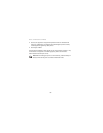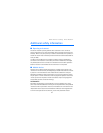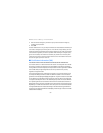Additional safety information
90
3. Enter the official emergency number for your present location. Emergency
numbers vary by location.
4. Press Call.
If certain features are in use, you may first need to turn those features off before you
can make an emergency call. If the phone is in an offline or flight mode, you must
change the profile to activate the phone function before you can make an emergency
call. Consult this guide or your service provider. When making an emergency call,
give all the necessary information as accurately as possible. Your wireless phone
may be the only means of communication at the scene of an accident. Do not end
the call until given permission to do so.
■ Certification Information (SAR)
THIS MOBILE DEVICE MEETS GUIDELINES FOR EXPOSURE TO RADIO WAVES.
Your mobile device is a radio transmitter and receiver. It is designed not to exceed
the limits for exposure to radio waves recommended by international guidelines.
These guidelines were developed by the independent scientific organization ICNIRP
and include safety margins designed to assure the protection of all persons,
regardless of age and health.
The exposure guidelines for mobile devices employ a unit of measurement known
as the Specific Absorption Rate or SAR. The SAR limit stated in the international
guidelines is 2.0 watts/kilogram (W/kg) averaged over 10 grams of tissue. Tests for SAR
are conducted using standard operating positions with the device transmitting at
its highest certified power level in all tested frequency bands. The actual SAR level
of an operating device can be well below the maximum value because the device is
designed to use only the power required to reach the network. That amount changes
depending on a number of factors such as how close you are to a network base station.
The highest SAR value when tested according to international testing procedures for
use at the ear for device type RH-89 is 0.58 W/kg. The device type is listed on the label
located under the battery.


















